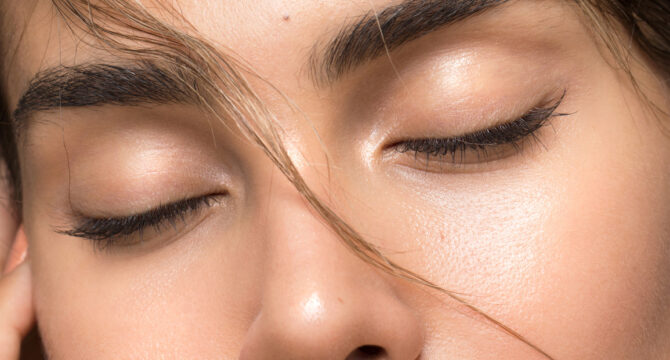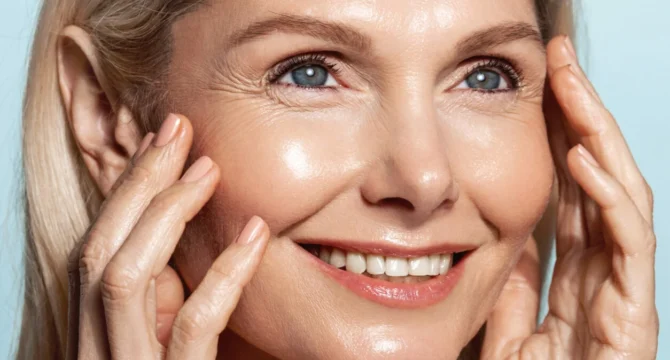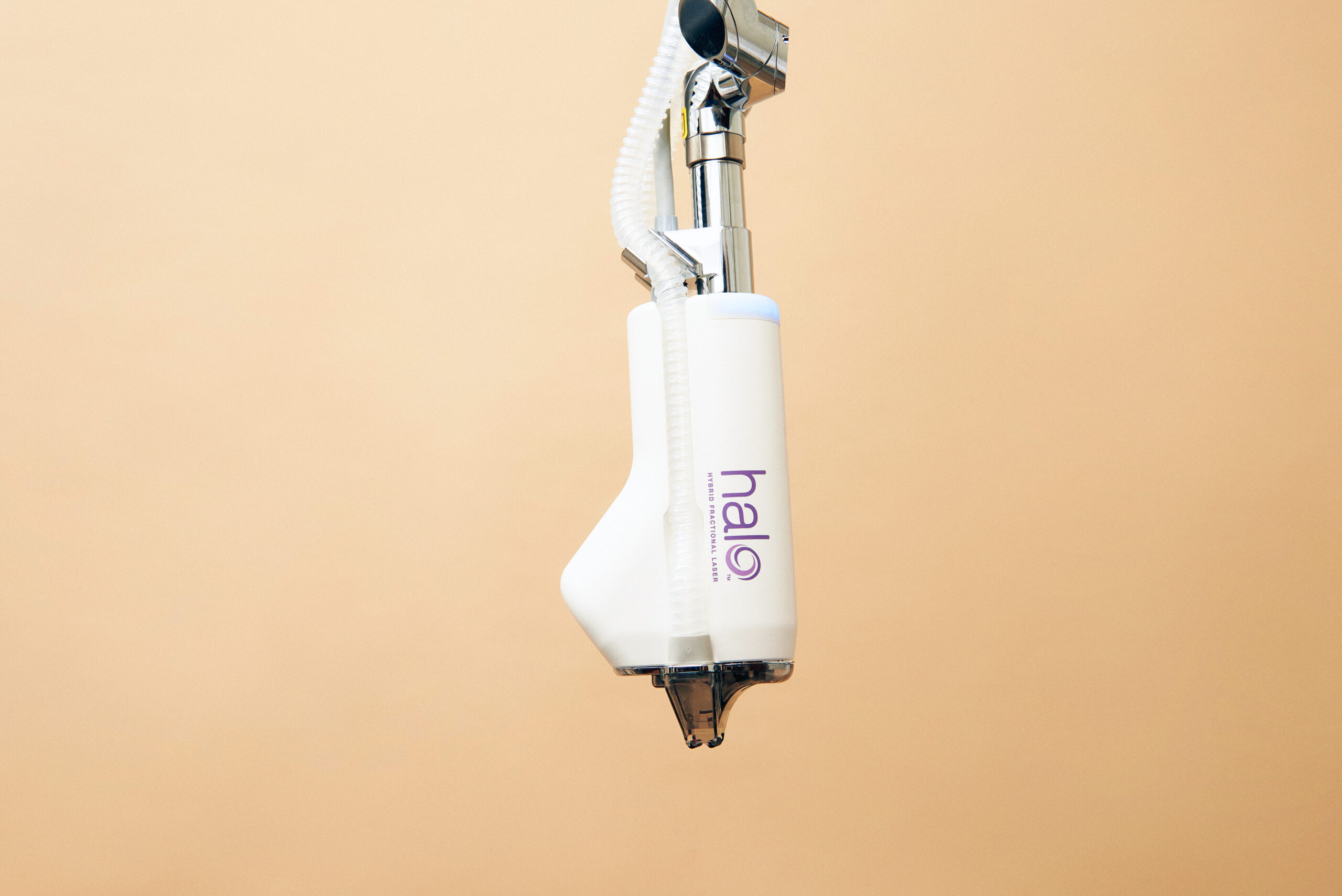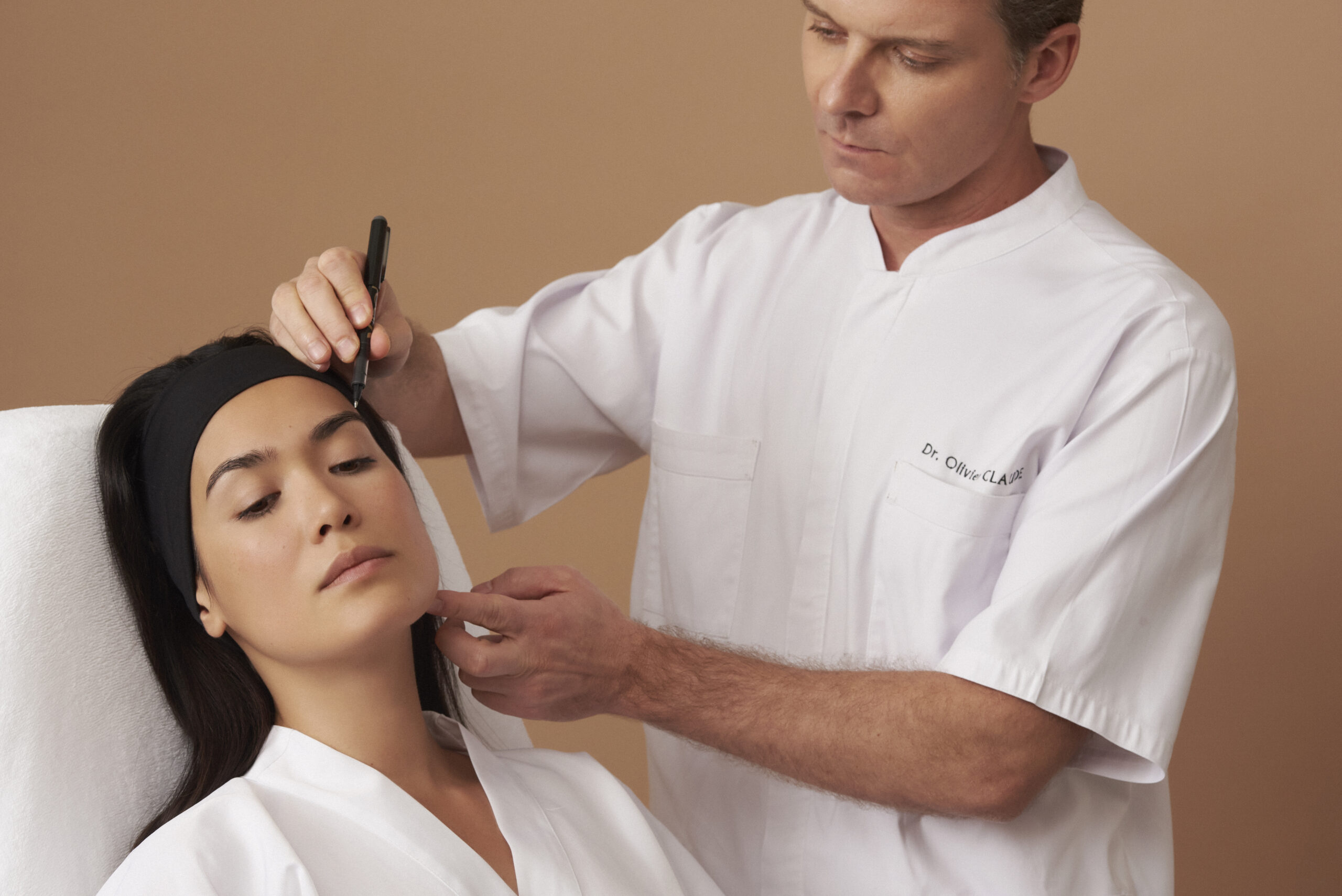
Personalised MD Codes
How to define MD Codes
Presentation
The face comprises several anatomical units: the cheek, forehead, lips, etc. The MD Codes are precise sites within each of these units that are treated in an architectural fashion, thus restoring facial support. This revolutionary technique produces remarkably effective, natural and harmonious results while lightening the facial features. The principle is not to inject to create volume, but to inject to restore facial support.
The injection sites are represented by a combination of letters and numbers. The letters represent the anatomical area and the numbers the injection sequence CK1 CK2 T1 T2…
Do MD Codes help to make facial analysis more objective?
Yes, this coding makes it possible to optimise the development of the treatment plan and also to give the patient a better understanding of the proposed strategy. The MD Codes also make it easier to teach our colleagues at conferences and training sessions on injection techniques. This is a truly innovative tool that has no equivalent in our therapeutic arsenal. It facilitates communication and makes treatment more precise.
How will the face look after an MD Codes treatment?
It will “withstand time” much better. The total resorption time for hyaluronic acids is over 2 years. This depends on the type of gel used, the location of the injection, the quantity and the patient’s metabolism. A maintenance injection is necessary around 24 months, but it will generally be smaller in quantity than the first session, and its effect will be longer-lasting. In addition, a face treated with MD Codes expressing more positive emotions therefore becomes more attractive.
Who invented the MD Codes?
Dr Mauricio DE MAIO, a Brazilian plastic surgeon, brought a new dimension to the use of hyaluronic acid with this codification. In just a few years, our approach to analysing and treating the face has evolved considerably. Our regular exchanges with Dr Mauricio DE MAIO enable us to refine the use of MD Codes even further.
Procedure
What is my approach to MD Codes?
If the sagging is moderate, injections are usually sufficient. If it is more severe, surgery may be necessary. In this case, before the surgical facelift, I restore the facial support with hyaluronic acid. New hyaluronic acid gels make it possible to obtain results that last for several years, requiring only “maintenance” injections in increasingly smaller quantities. These will be carried out approximately every 2 years. The different gel densities enable us to best restore the loss of support that occurs with bone or fat resorption. The injections are extremely precise because they are carried out with the patient awake in a sitting position. I work like a “sculptor”, according to a precise treatment plan drawn up after a personalised study that respects each patient’s wishes and needs. However, during the first few sessions, you should avoid injecting hyaluronic acid into the folds of the lower face. These folds are merely the “consequences” of sagging. Treatments in the superficial planes of the lower face, such as the nasolabial folds or the bitterness folds, could erase wrinkles but would make facial features heavier and block expressions. The first step in rejuvenating or beautifying a face is to restore its support system. The causes must therefore be treated first, not the consequences. Hyaluronic acid injections will be performed first on the upper two-thirds of the face to restore a beautiful, youthful oval or inverted cone.
Why was I one of the first to use and teach this technique?
More than 15 years ago I went to the United States to attend a Fellowship in Plastic and Aesthetic Surgery with Pr. Michael Yaremchuk (Harvard Medical School – Boston).
I was impressed by the quality of his results in facial rejuvenation and beautification surgery. He was one of the first to understand the need to restore facial support.
During his facelifts, Pr. Michael Yaremchuk combined small implants in the cheekbone, orbital rim and chin.
Ageing is a multifactorial mechanism. The facelift is a very powerful tool that allows the muscles and skin to be repositioned upwards and backwards where they were before.
But over the years we also lose bone and deep fat, which leads to a loss of support for the skin, which accumulates “down and forward”.
This creates the nasolabial fold, the bitterness fold and the jowls. A simple facelift could treat the sagging but would risk giving the appearance of a drawn and flattened face. Implants therefore provided a real synergy with the facelift by restoring facial support.
These small prostheses were gradually replaced by autologous fat transfers, also known as lipofilling, which achieve comparable results but with simpler after-effects for our patients.
However, the fat used is more fluid than the fat and bone we lose over the years, and so does not offer the same support. I still use lipofilling in the majority of my facelifts and blepharoplasties, but in smaller quantities. This is because it provides valuable stem cells and growth factors that improve skin quality.
Today, hyaluronic acid and MD Codes are joining this approach to restoring facial support with treatments that have “gentler” after-effects.
What role does surgery play with MD Codes?
The precise, codified use of hyaluronic acid gels will usually enable the objectives set with MD Codes to be achieved. However, there may be significant sagging of the face or eyelids, which will require surgery or tensor threads at a later stage.
The restoration of deep support with MD Codes will enable to achieve an optimised result by using a genuine synergy between injection treatments and surgery. This global medical-surgical approach also makes it possible to postpone the time for surgery.
Surgical interventions will then be gentler than if they had been used to treat all the consequences of ageing.
After the surgery, injections will also be carried out, but more spaced out and in smaller quantities in order to maintain the results as well as possible.
This global and progressive approach thus has a real preventive virtue which allows us to pass the years serenely with the best version of ourselves.
How to elaborate a tailor-made MD Codes treatment?
Every face is different and all our patients have their own wishes for rejuvenation or beautification.
Some will want to look less tired, less slack or even less sad or severe.
Others may wish to have a more feminine, masculine or lighter face.
Analysis and strategy are always the first steps in a consultation in order to create a specific, personalised treatment plan.
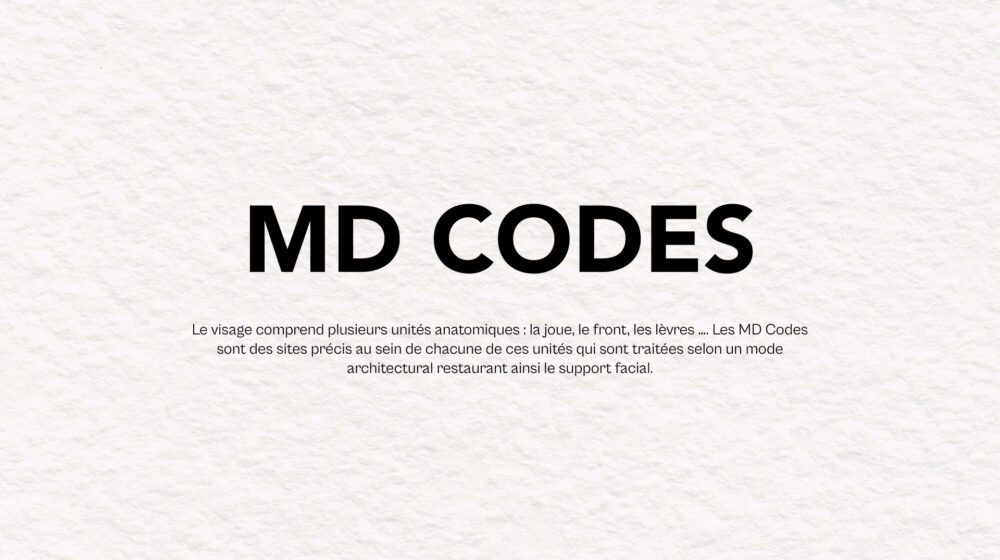
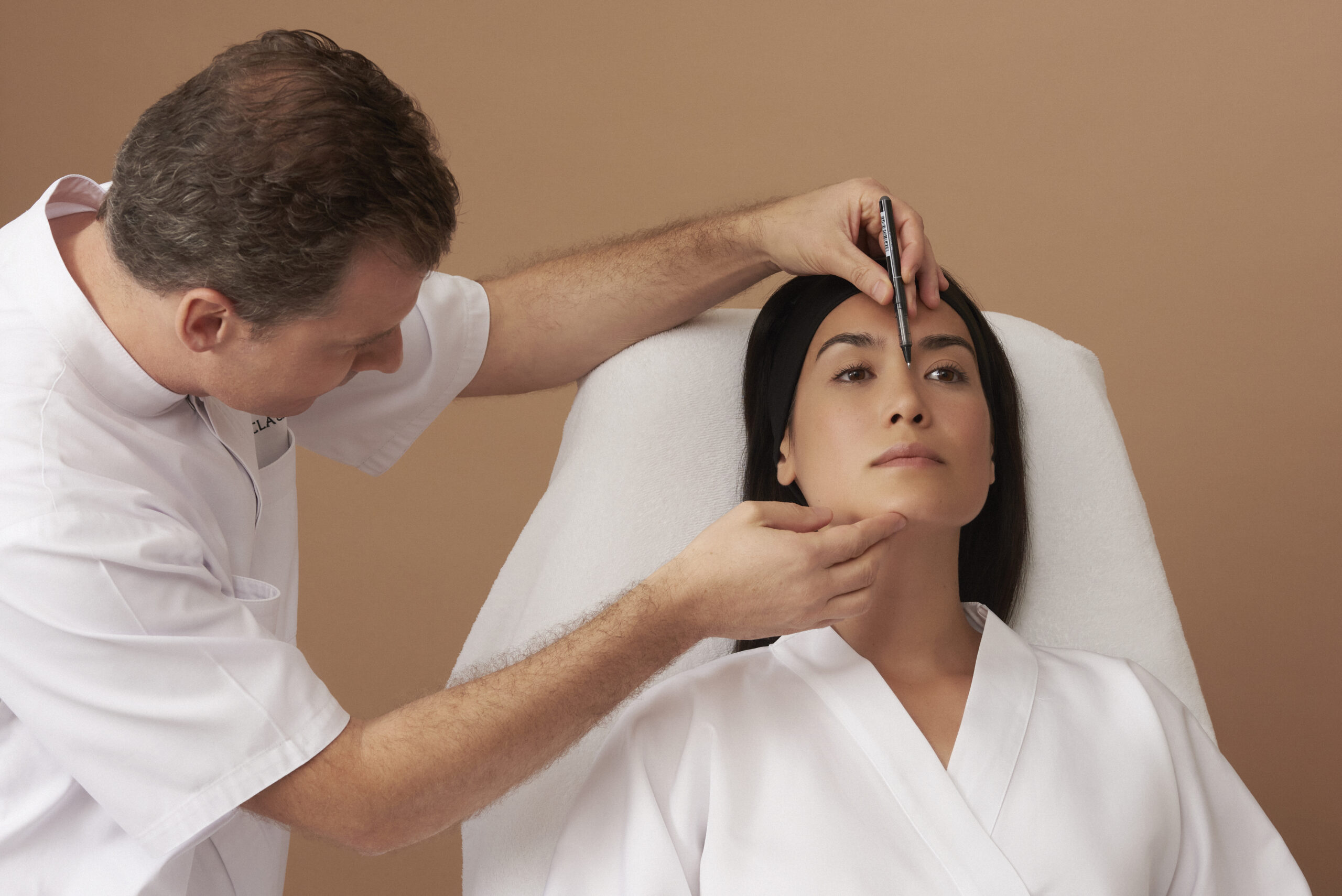
Results
How do MD Codes help people express more positive emotions?
MD Codes restore positive facial muscle dynamics. A face is a vector of emotions, which can be positive or negative. To express them, we use elevator and depressor muscles (agonist/antagonist). Over the years, the elevator muscles (for rather positive emotions) tend to function less well due to the loss of bone and fat in the area around them. Small, precise deposits of hyaluronic acid gel in these areas enable the achievement of positive muscle modulation.
The injected product will restore the mechanical lever effect and the positive muscle (such as the zygomatic elevator) will function as it did before.
Conversely, small deposits of gel on the surface of lowering muscles such as the Depressor Anguli Oris (DAO) at the angle of the mouth reduce the expression of negative emotions (inverted smiley face). The face thus becomes more positive.
How will the face look after an MD Codes treatment?
It will “withstand time” much better. The total resorption time for hyaluronic acids is over 2 years.
This depends on the type of gel used, the location of the injection, the quantity and the patient’s metabolism.
A maintenance injection is necessary around 24 months, but it will generally be smaller in quantity than the first session, and its effect will be longer-lasting.
In addition, a face treated with MD Codes expressing more positive emotions therefore becomes more attractive.
Can MD Codes prevent or slow down facial ageing?
Yes, after 2 or 3 years the face will always be more radiant than that of a “virtual twin” who would not have benefited from the injections. Because the facial support has been restored, the face slackens less quickly.
In addition, the architectural analysis of the face enables us to detect areas of weakness. These “weak links” will be reinforced – as we might do in a house. This avoids the domino effect of weakening a key area – think of it as bolstering a load-bearing wall.
This concept of “better ageing” helps us to support our faces over the years so that they remain harmonious and radiant – like a house that remains safe and sound thanks to a preventive approach.
Who invented the MD Codes?
Dr Mauricio DE MAIO, a Brazilian plastic surgeon, brought a new dimension to the use of hyaluronic acid with this codification.
In just a few years, our approach to analysing and treating the face has evolved considerably.
Our regular exchanges with Dr Mauricio DE MAIO enable us to refine the use of MD Codes even further.
What is my approach to MD Codes?
If the sagging is moderate, injections are usually sufficient. If it is more severe, surgery may be necessary.
In this case, before the surgical facelift, I restore the facial support with hyaluronic acid.
New hyaluronic acid gels make it possible to obtain results that last for several years, requiring only “maintenance” injections in increasingly smaller quantities. These will be carried out approximately every 2 years.
The different gel densities enable us to best restore the loss of support that occurs with bone or fat resorption.
The injections are extremely precise because they are carried out with the patient awake in a sitting position.
I work like a “sculptor”, according to a precise treatment plan drawn up after a personalised study that respects each patient’s wishes and needs.
However, during the first few sessions, you should avoid injecting hyaluronic acid into the folds of the lower face. These folds are merely the “consequences” of sagging.
Treatments in the superficial planes of the lower face, such as the nasolabial folds or the bitterness folds, could erase wrinkles but would make facial features heavier and block expressions.
The first step in rejuvenating or beautifying a face is to restore its support system.
The causes must therefore be treated first, not the consequences. Hyaluronic acid injections will be performed first on the upper two-thirds of the face to restore a beautiful, youthful oval or inverted cone.
Why was I one of the first to use and teach this technique?
More than 15 years ago I went to the United States to attend a Fellowship in Plastic and Aesthetic Surgery with Pr. Michael Yaremchuk (Harvard Medical School – Boston).
I was impressed by the quality of his results in facial rejuvenation and beautification surgery. He was one of the first to understand the need to restore facial support.
During his facelifts, Pr. Michael Yaremchuk combined small implants in the cheekbone, orbital rim and chin.
Ageing is a multifactorial mechanism. The facelift is a very powerful tool that allows the muscles and skin to be repositioned upwards and backwards where they were before.
But over the years we also lose bone and deep fat, which leads to a loss of support for the skin, which accumulates “down and forward”.
This creates the nasolabial fold, the bitterness fold and the jowls. A simple facelift could treat the sagging but would risk giving the appearance of a drawn and flattened face. Implants therefore provided a real synergy with the facelift by restoring facial support.
These small prostheses were gradually replaced by autologous fat transfers, also known as lipofilling, which achieve comparable results but with simpler after-effects for our patients.
However, the fat used is more fluid than the fat and bone we lose over the years, and so does not offer the same support. I still use lipofilling in the majority of my facelifts and blepharoplasties, but in smaller quantities. This is because it provides valuable stem cells and growth factors that improve skin quality.
Today, hyaluronic acid and MD Codes are joining this approach to restoring facial support with treatments that have “gentler” after-effects.
What role does surgery play with MD Codes?
The precise, codified use of hyaluronic acid gels will usually enable the objectives set with MD Codes to be achieved. However, there may be significant sagging of the face or eyelids, which will require surgery or tensor threads at a later stage.
The restoration of deep support with MD Codes will enable to achieve an optimised result by using a genuine synergy between injection treatments and surgery. This global medical-surgical approach also makes it possible to postpone the time for surgery.
Surgical interventions will then be gentler than if they had been used to treat all the consequences of ageing.
After the surgery, injections will also be carried out, but more spaced out and in smaller quantities in order to maintain the results as well as possible.
This global and progressive approach thus has a real preventive virtue which allows us to pass the years serenely with the best version of ourselves.
What is Dr Olivier Claude’s opinion on MD Codes?
MD Codes represent a major advance in facial rejuvenation and beautification. MD Codes optimise the analysis and treatment of our patients. Their personalised use is essential, enabling us to create the best version of ourselves by restoring facial support while encouraging the expression of positive emotions.
The “MD Codes synergy” between injections and, if necessary, surgery, ensures the most natural and harmonious results. The face, harmonised in this way, will benefit from real prevention with a “better ageing” effect.
The sessions take place in the medical practice of Dr Olivier CLAUDE, Plastic Surgeon, at 124 Rue de la Faisanderie – Paris 16th
